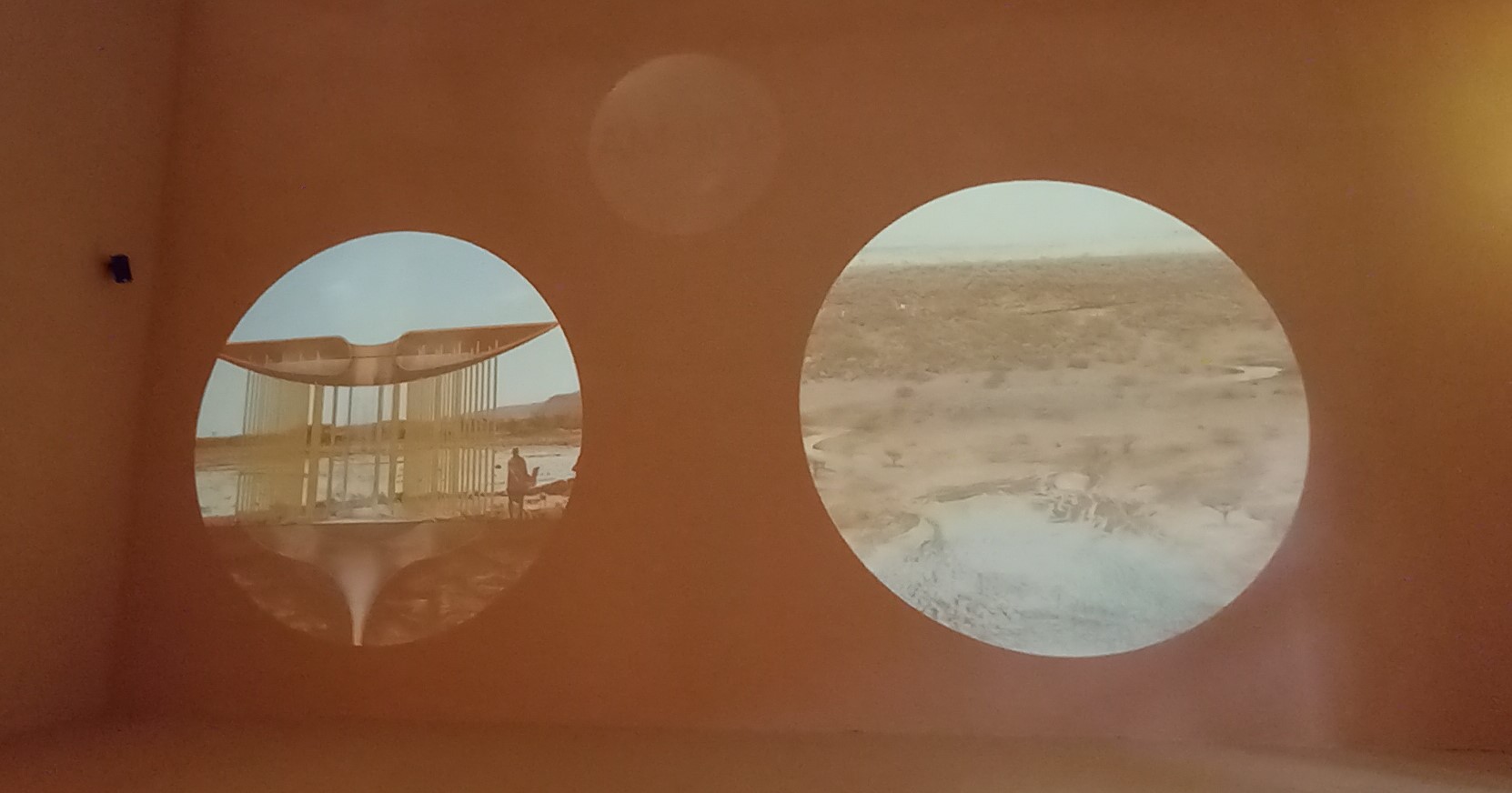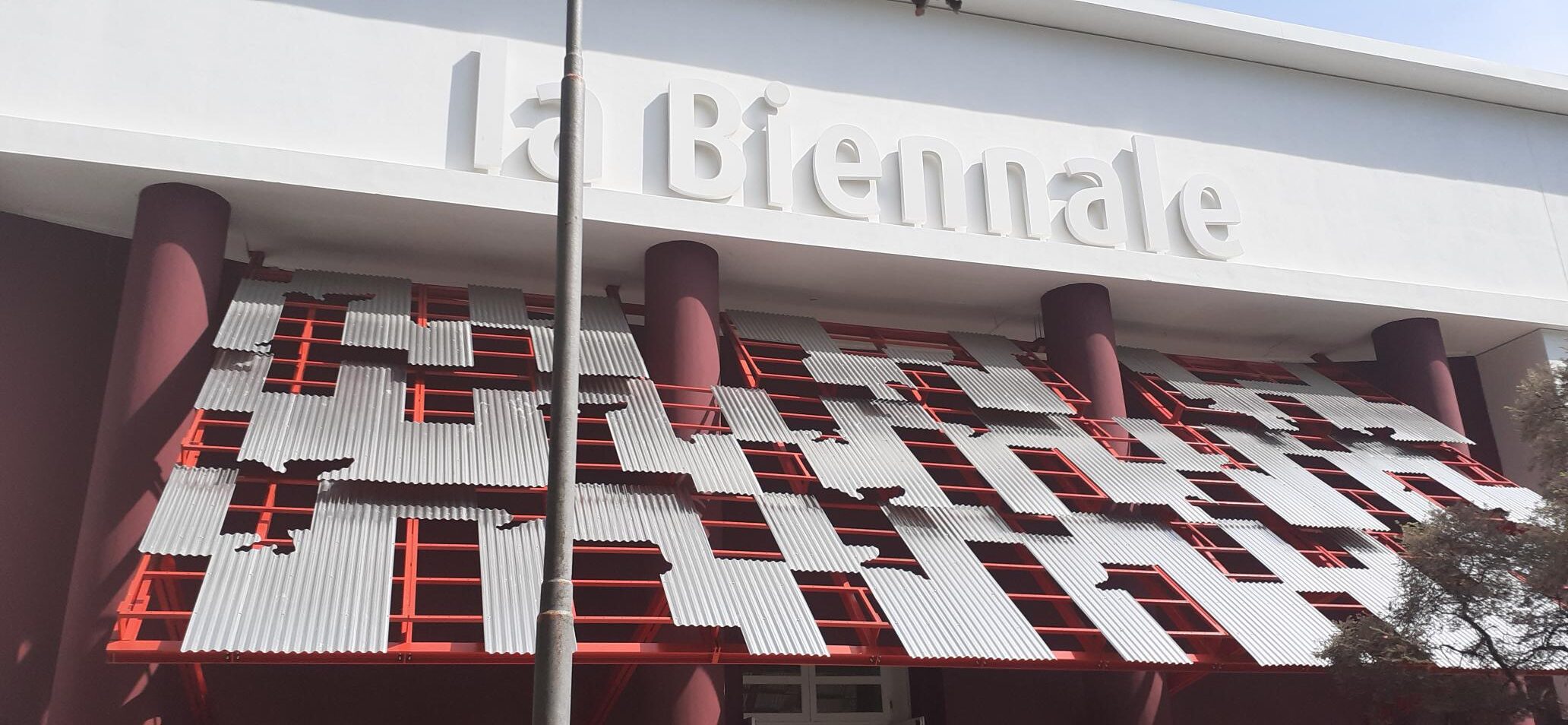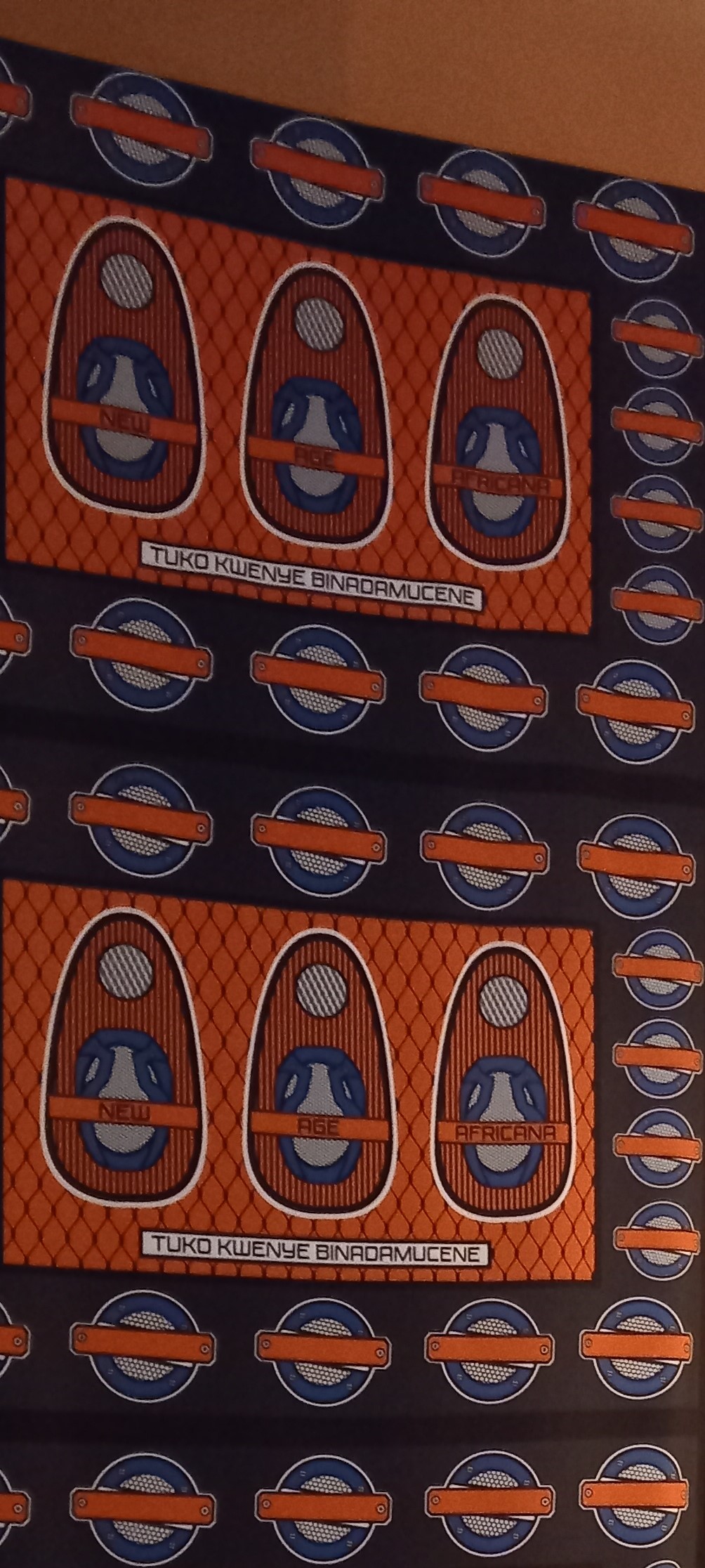TPAAE researcher Marlena Chybowska-Butler visited the Mostra di Architettura di Venezia – the architecture show presented in alternate years on the grounds of the city’s Contemporary Art Biennale – with National Museum in Szczecin colleague Ewa Pradzynska and project volunteer Rick Butler.
For the first time since its launch in 1980, the International Architecture Exhibition at the Venice Biennale is curated by a person of African descent. As a result, Africa and the African diaspora are receiving unprecedented representation and correspondingly greater visibility.
More than half of the invited participants in the 18th staging of the exhibition have ties to the continent, home to both the world’s youngest population and a repository of evolutionary history. The curator – Ghanaian-Scottish architect, educator, and novelist Lesley Lokko – frames Africa as a leading force in “The Laboratory of the Future” which is the exhibition’s title, and showcases an array of inventive architectural initiatives that address climate change and colonial oppression.
Lokko made a space for voices in that laboratory which are not often heard in architectural exhibitions taking place on a global scale. Having in mind the observation that culture is the sum total of stories we tell about ourselves, she made space for various ways of storytelling – from personal perspectives that reflect childhood learning, family history, and relations with neighbours. It is through such narrations that questions about colony, identity, territory, and history arise.
There is a sense among many Black practitioners (which is a term Lokko applies to the architects and artists highlighted at the show) that they never have been offered space to tell their stories. Inviting them appears an act of healing – of recovering what’s been lost in their often frustrated desire to speak. In that sense, the Biennale is a recuperative experience, akin to the closing of a wound and the filling of a void.
Themed around decolonization and decarbonisation, core presentations “Force Majeure” at the Central Pavilion in the Giardini exhibition grounds and “Dangerous Liaisons”, staged both at the Arsenale and at Fort Maghera, anchor an exhibition in six parts. Among the 89 invited participants is Nairobi-based architectural studio cave_bureau which returns to the event after earning special mention for a conceptual project – which involved the removal of human intervention from our natural surrounding, called “The Anthropocene Museum: Exhibit 3.0 Obsidian Rain” – at the 17th Biennale in 2021.
Displayed in the Central Pavilion, the studio’s offering for this year’s iteration is a celebration of cultural custodians and generational history through what it calls “Oral Archive. New Age Africana.” This multi-part work presents conversations with members of African cave-dwelling communities, including the Maasai at Mount Susuwa in Kenya’s Great Rift Valley, in a film-and-audio installation. Oral histories – both factual and fictional – are combined with drawings, maps, photos, three-dimensional scans, and natural sounds to create an immersive experience that illuminates the impact of modernity on delicate local ecosystems.
Historically inhabited by early hominids, Kenya’s volcanic caves provided shelter for East African slaves and freedom fighters during the Colonial period. The group’s work emphasizes the concept of ‘reversed futurism’, which involves studying the past to develop sustainable solutions for current and future problems, including climate change.
“The Laboratory of the Future” has many threads and contexts. The complexity of the world forces an astonishing multitude of methodologies – directions that are breeding new definitions of the architecture profession. Thanks in no small part to its ethical ambivalence, architecture, like any tool, can serve purposes both good and bad. By placing emphasis on good practices and narratives that provide agency to those working in places where the impact of global development is strongly felt, Lokko’s exhibition shows us that ecological and social challenges are blurring the lines separating architecture from other, related disciplines by reducing the primacy of production of sophisticated forms.
Marlena Chybowska-Butler




